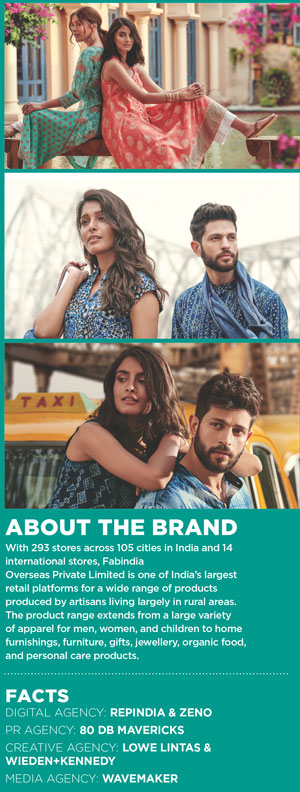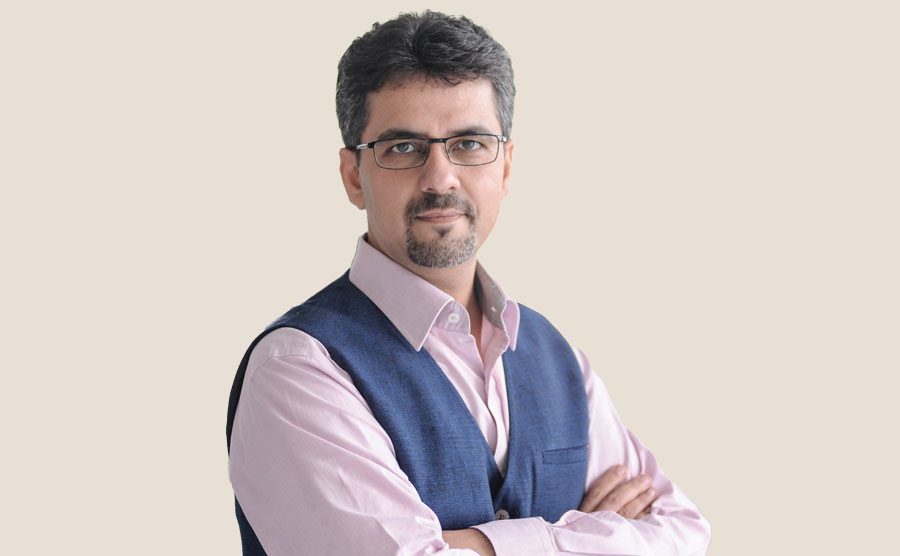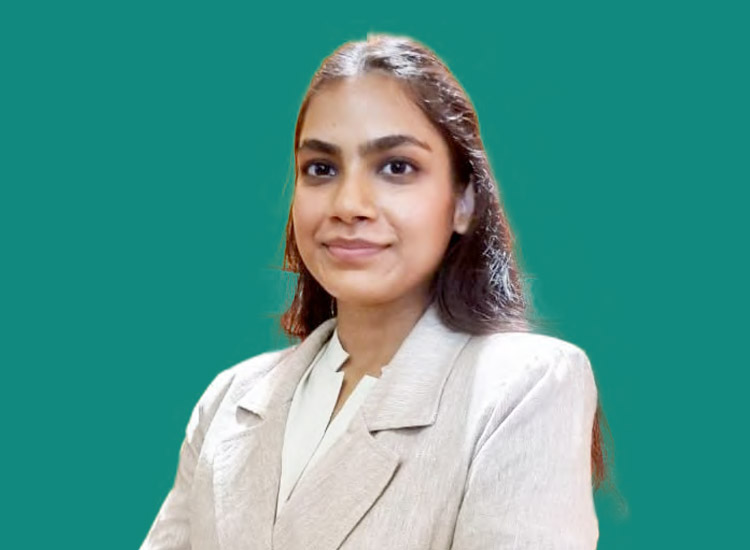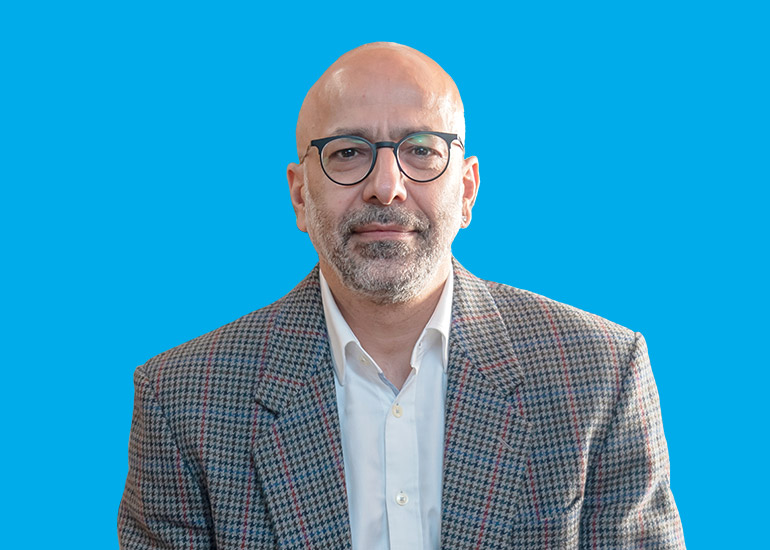Q] This is your first association with ‘Cricket Live’ on Star Sports …tell us about it.
Yes, in fact it is also the first time that we have had anything to do with cricket or on TV for a while. On Cricket Live, we have worked with the anchors, experts and commentators and dressed them up in our everyday casuals, our western wear range for men, largely focusing on jackets.
Q] When did you launch this everyday Western wear range… and to what extent does it blend with FabIndia’s ethnic roots?
We launched this at the beginning of the IPL. ‘Everyday Casuals’ in western wear will be a great focus for us this entire year. We have a similar range for women and children too. There is a great opportunity here from a ‘share of wardrobe’ point of view. The Indian wear or ethnic wear men’s segment is roughly 9% to 10% share of wardrobe and we obviously have a big role to play in that. But, there is a very large share of wardrobe in the ‘everyday casuals’ space, i.e. ‘casual wear’, ‘everyday wear’ and ‘western wear’. We have been slightly reticent in that space and thus wanted to clearly show our presence there. But jeans and t-shirt is something that we don’t include here instead we have a lot of short kurtas, kurta shirts, and cotton trousers which are slightly formal etc. We will do western wear in our own language, and it will be more of fusion.
Q] Why did you think cricket was the right fit for this new range?
We have got phenomenal reach because of it as Star this year has gone a long way, apart from regional feeds like Marathi, Telugu, Tamil, Bengali, etc, they are also carrying the IPL feed on their GEC channels, Movie channels etc. Roughly we are looking at a target audience of 7-7.5 crores. Point number two is that when we look at the cricket experts and anchors, it was a very seamless product integration where Fabindia could fit in very well with the kind of things that they normally wear, i.e. shirts, trousers, jackets etc. So it was a deal which actually allowed us to showcase our products and demonstrate how it could be worn on an everyday basis. Since, IPL also is on every day, at least for 43-45 days, it gives us a massive window to fit the entire range.
Q] What kind of feedback have you got by launching everyday wear around the IPL and also heavily promoting it through a cricket show?
It has been brilliant. First of all, the foot falls in our stores are higher than the pre-IPL period. Secondly, our conversions on the western wear category overall are higher than what they have been in the previous year, specifically in the men’s wear range. So, we have seen growth to the tune of 45%-50% in terms of how we have been performing in the same period last year.
Q] Fabindia closed FY 2018 with about 42% decline in net profit. What went wrong?
So, there were various factors like one time impairment costs which had to be adjusted at some point of time. We chose to adjust them in that particular financial year. Had we not done that we would have been looking at a strong double digit growth. So, it has basically been these costs as also the investments into some new projects.
Q] Which are these new projects?
It includes a lot of new things that we have experimented with. We piloted the experience centre a little over a year ago with our first store in Vasant Kunj, Delhi. Today as we speak we have almost 12 stores, and in this year, we plan to have another 25. These are large format stores anywhere between 800012,000 square feet of space. Outside of a much larger product range being displayed, certain other services are available here which are not available in the regular store. For example, we have an interior design studio which is used for home design and decoration, that service is available in this format. Apart from that we have Fab Café, a play centre for kids called ‘Tug Big’, an alteration studio for our clothes, as well as a wellness studio.
 Q] You also recently came up with your Customer Loyalty Programme to engage more with your customers, how many people are part of it?
Q] You also recently came up with your Customer Loyalty Programme to engage more with your customers, how many people are part of it?
We have a very large database of customers, in excess of three million and these are not all members of the programme, these are the number of people that were part of our CRM outreach initiative which was more mobile number linked. When we launched the programme, the attempt was to migrate as many of these members into the programme. The programme was launched somewhere in the beginning of February and the migration of members from the CRM base into the programme base is currently on. I suspect it will take another 2-3 months for that exercise to get complete. Here earning and redeeming points is not just shopping led. If you engage with the brand, fill up surveys, refer friends and family, you win a lot of points. You can also redeem your points on certain customized and curated experiences like cultural walks, vacations, special meals at restaurants etc. So, it’s a very experiential programme which we think is extremely unique in the entire industry. Of course, from the earning point of view too, it has amongst the most generous earning rates.
Q] What percentage of the ethnic wear segment market does Fabindia command?
Very small, because ethnic wear as a market is very fragmented. A lot of it is in the unorganized space, starting from tailors doing the stitching locally to a whole lot of local brands making kurtas, churidars and pajamas. It is a very difficult market to size up at a national branded penetrated opportunity level.
Q] In the organized market how much of market-share do you have?
We would be in double digits. So, the number would be close to 15% to 20%.
Q] What percentage of your revenue comes from nontextile range?
A large part of revenue is from the textile range and that will be close to 65%-70% of what we do. All the other businesses put together would be about roughly 30%. The second largest would be Home.
Q] Tell us about your marketing mix?
We do a lot of Print ads, especially in newspapers on product announcement and collection launches. The last one was called ‘Indian Summer’. Apart from that we do a lot of work on Digital and Social, videos and influencer marketing. And that keeps happening almost on a monthly basis. We don’t have TV campaigns. Because from a storytelling point of view Digital and Social media works very well for us and from an overall mass reach point of view, newspaper works well. So honestly we don’t feel the need to spend on Television.
Q] What are the biggest markets for Fabindia?
Large metro cities like Delhi, Bombay, Bangalore, Hyderabad, Chennai, Kolkata would be very large contributors to our business. We are also seeing a significantly strong growth in the non-metro cities as well, so Lucknow, Bhubaneswar, Chandigarh, Pune are delivering very strong growth. We have close to 305 stores, and they are spread across 102-103 locations.
Yes, in fact it is also the first time that we have had anything to do with cricket or on TV for a while. On Cricket Live, we have worked with the anchors, experts and commentators and dressed them up in our everyday casuals, our western wear range for men, largely focusing on jackets.
Q] When did you launch this everyday Western wear range… and to what extent does it blend with FabIndia’s ethnic roots?
We launched this at the beginning of the IPL. ‘Everyday Casuals’ in western wear will be a great focus for us this entire year. We have a similar range for women and children too. There is a great opportunity here from a ‘share of wardrobe’ point of view. The Indian wear or ethnic wear men’s segment is roughly 9% to 10% share of wardrobe and we obviously have a big role to play in that. But, there is a very large share of wardrobe in the ‘everyday casuals’ space, i.e. ‘casual wear’, ‘everyday wear’ and ‘western wear’. We have been slightly reticent in that space and thus wanted to clearly show our presence there. But jeans and t-shirt is something that we don’t include here instead we have a lot of short kurtas, kurta shirts, and cotton trousers which are slightly formal etc. We will do western wear in our own language, and it will be more of fusion.
Q] Why did you think cricket was the right fit for this new range?
We have got phenomenal reach because of it as Star this year has gone a long way, apart from regional feeds like Marathi, Telugu, Tamil, Bengali, etc, they are also carrying the IPL feed on their GEC channels, Movie channels etc. Roughly we are looking at a target audience of 7-7.5 crores. Point number two is that when we look at the cricket experts and anchors, it was a very seamless product integration where Fabindia could fit in very well with the kind of things that they normally wear, i.e. shirts, trousers, jackets etc. So it was a deal which actually allowed us to showcase our products and demonstrate how it could be worn on an everyday basis. Since, IPL also is on every day, at least for 43-45 days, it gives us a massive window to fit the entire range.
Q] What kind of feedback have you got by launching everyday wear around the IPL and also heavily promoting it through a cricket show?
It has been brilliant. First of all, the foot falls in our stores are higher than the pre-IPL period. Secondly, our conversions on the western wear category overall are higher than what they have been in the previous year, specifically in the men’s wear range. So, we have seen growth to the tune of 45%-50% in terms of how we have been performing in the same period last year.
Q] Fabindia closed FY 2018 with about 42% decline in net profit. What went wrong?
So, there were various factors like one time impairment costs which had to be adjusted at some point of time. We chose to adjust them in that particular financial year. Had we not done that we would have been looking at a strong double digit growth. So, it has basically been these costs as also the investments into some new projects.
Q] Which are these new projects?
It includes a lot of new things that we have experimented with. We piloted the experience centre a little over a year ago with our first store in Vasant Kunj, Delhi. Today as we speak we have almost 12 stores, and in this year, we plan to have another 25. These are large format stores anywhere between 800012,000 square feet of space. Outside of a much larger product range being displayed, certain other services are available here which are not available in the regular store. For example, we have an interior design studio which is used for home design and decoration, that service is available in this format. Apart from that we have Fab Café, a play centre for kids called ‘Tug Big’, an alteration studio for our clothes, as well as a wellness studio.
 Q] You also recently came up with your Customer Loyalty Programme to engage more with your customers, how many people are part of it?
Q] You also recently came up with your Customer Loyalty Programme to engage more with your customers, how many people are part of it? We have a very large database of customers, in excess of three million and these are not all members of the programme, these are the number of people that were part of our CRM outreach initiative which was more mobile number linked. When we launched the programme, the attempt was to migrate as many of these members into the programme. The programme was launched somewhere in the beginning of February and the migration of members from the CRM base into the programme base is currently on. I suspect it will take another 2-3 months for that exercise to get complete. Here earning and redeeming points is not just shopping led. If you engage with the brand, fill up surveys, refer friends and family, you win a lot of points. You can also redeem your points on certain customized and curated experiences like cultural walks, vacations, special meals at restaurants etc. So, it’s a very experiential programme which we think is extremely unique in the entire industry. Of course, from the earning point of view too, it has amongst the most generous earning rates.
Q] What percentage of the ethnic wear segment market does Fabindia command?
Very small, because ethnic wear as a market is very fragmented. A lot of it is in the unorganized space, starting from tailors doing the stitching locally to a whole lot of local brands making kurtas, churidars and pajamas. It is a very difficult market to size up at a national branded penetrated opportunity level.
Q] In the organized market how much of market-share do you have?
We would be in double digits. So, the number would be close to 15% to 20%.
Q] What percentage of your revenue comes from nontextile range?
A large part of revenue is from the textile range and that will be close to 65%-70% of what we do. All the other businesses put together would be about roughly 30%. The second largest would be Home.
Q] Tell us about your marketing mix?
We do a lot of Print ads, especially in newspapers on product announcement and collection launches. The last one was called ‘Indian Summer’. Apart from that we do a lot of work on Digital and Social, videos and influencer marketing. And that keeps happening almost on a monthly basis. We don’t have TV campaigns. Because from a storytelling point of view Digital and Social media works very well for us and from an overall mass reach point of view, newspaper works well. So honestly we don’t feel the need to spend on Television.
Q] What are the biggest markets for Fabindia?
Large metro cities like Delhi, Bombay, Bangalore, Hyderabad, Chennai, Kolkata would be very large contributors to our business. We are also seeing a significantly strong growth in the non-metro cities as well, so Lucknow, Bhubaneswar, Chandigarh, Pune are delivering very strong growth. We have close to 305 stores, and they are spread across 102-103 locations.
























